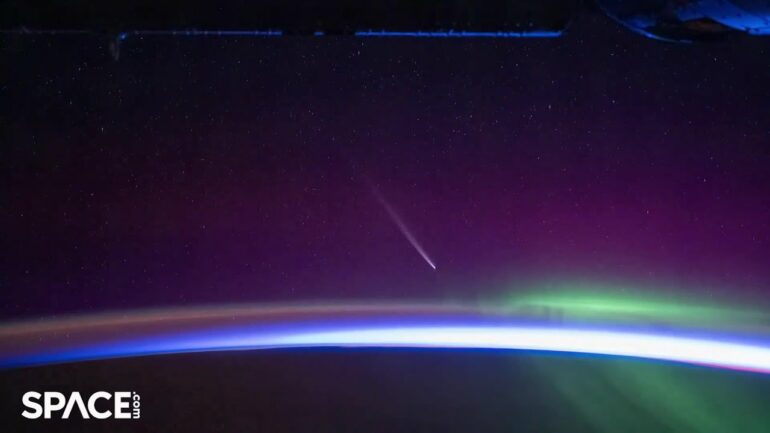The human mind may find it difficult to conceptualize: a cosmic cloud so colossal it surrounds the Sun and eight planets as it extends trillions of miles into deep space.
The spherical shell known as the Oort Cloud is, for all practical purposes, invisible. Its constituent particles are spread so thinly, and so far from the light of any star, including the Sun, that astronomers simply cannot see the cloud, even though it envelops us like a blanket.
It is also theoretical. Astronomers infer the Oort Cloud is there because it’s the only logical explanation for the arrival of a certain class of comets that sporadically visit our solar system. The cloud, it turns out, is basically a gigantic reservoir that may hold billions of icy celestial bodies.
Two of those bodies will pass by Earth in the days leading up to Halloween. Tsuchinshan-ATLAS, also known as Comet C/2023 A3, will be at its brightest, and likely visible to the naked eye, for a week or two after Oct. 12, the day it’s closest to Earth – just look to the western sky shortly after sunset. As the days pass, the comet will get fainter and move to a higher part of the sky.
A view of comet Tsuchinshan-ATLAS from the International Space Station.
The second comet, C/2024 S1 (ATLAS), just discovered on Sept. 27, should be visible around the end of October. The comet will pass closest to Earth on Oct. 24 – look low in the eastern sky just before sunrise. Then, after swinging around the Sun, the comet may reappear in the western night sky right around Halloween. It’s possible, however, that it could disintegrate, in part or in whole, as sometimes happens when comets pass by the Sun – and this one will come within 1 million miles (1.6 million kilometers) of our star.
As a planetary astronomer, I’m particularly curious about the Oort Cloud and the icy bodies inhabiting it. The Cloud’s residents may be a reason why life ignited on Earth; crashing on our planet eons ago, these ice bodies may have supplied at least some of the water that all life requires. At the same time, these same objects pose an ever-present threat to Earth’s continuation – and our survival.
Billions of comets
If an Oort Cloud object finds its way to the inner solar system, its ices vaporize. That process produces a tail of debris that becomes visible as a comet.
Some of these bodies, known as long-period comets, have orbits of hundreds, thousands or even millions of years, like Tsuchinshan-ATLAS. This is unlike the so-called short-period comets, which do not visit the Oort Cloud and have comparatively quick orbits. Halley’s comet, which cuts a path through the solar system and orbits the Sun every 76 years or so, is one of them.
The 20th-century Dutch astronomer Jan Oort, intrigued by the long-period comets, wrote a paper on them in 1950. He noted about 20 of the comets had an average distance from the Sun that was more…



